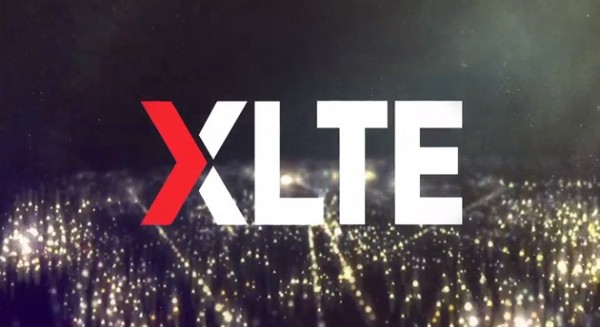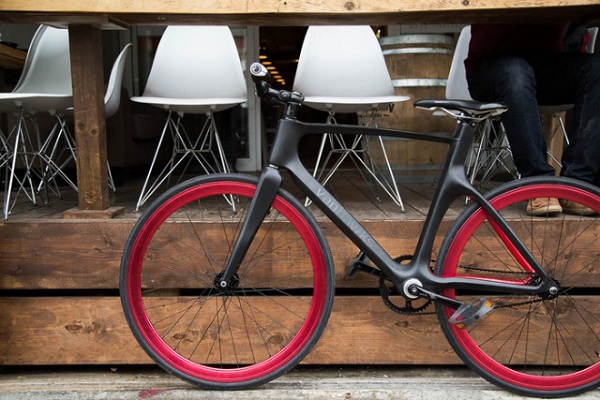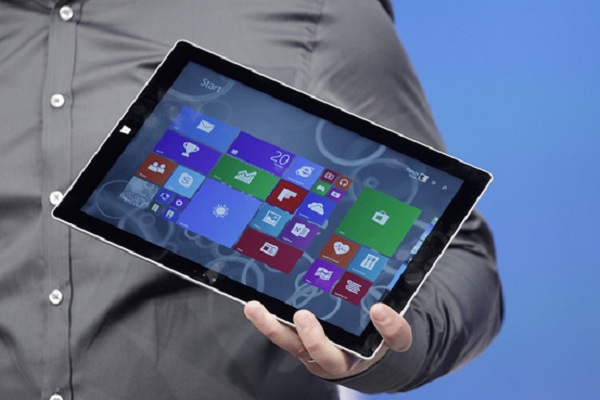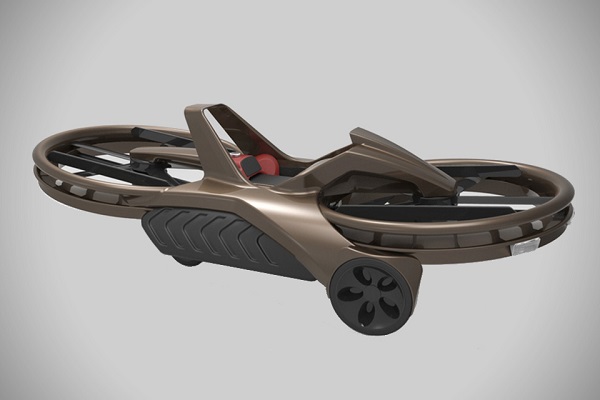Walyou |  |
- PlayStation Now Beta Heading For PlayStation 4
- Verizon Launches Screaming Fast XLTE
- Vanhawks Valour Connected Bike Helps Avoid Traffic, Stay Safe
- Microsoft Surface Pro 3 Dwarfs the Prev Gen with Its 12-Inch Display
- Gravity-Defying Star Wars-esque Aero-X Hoverbike to Be Launched in 2017
| PlayStation Now Beta Heading For PlayStation 4 Posted: 21 May 2014 07:00 AM PDT  Sony gets ready to bring their game streaming service to the PlayStation 4 on May 20th.
Since it's start around late January, the beta for Sony's newly announced streaming game service, PlayStation Now, has been quietly under way. Successfully, too, with private beta testers logging in over 50,000 gameplay hours. Up till this point, those numbers have been accumulated on the PlayStation 3, with testers streaming such PS3 titles as The Last of Us, Beyond: Two Souls, God of War: Ascension, and Puppeteer. Now with the planned Summer launch just around the bend, Sony is entering into phase two by expanding PS Now to the PlayStation 4 starting May 20. Those already enrolled for the PS Now beta only need to wait for an email voucher code to begin using the streaming service on their PS4s. Sony is planning on branching out to more users in the near future, but you can still be apart of a chosen few by registering for a Private Beta invite through their registration website. As for PS Now itself, Sony is targeting to bring the service to all its platforms (PS4, PS3, PS Vita) and other Sony devices, like their brand of Bravia televisions. The catalogue of games available from PS Now hasn't been solidified yet, although much speculation has mentioned support of titles both new and from the PSone/PlayStation 2 era. Be social! Follow Walyou on Facebook and Twitter, and read more related stories at https://www.facebook.com/Walyou and https://twitter.com/walyou. |
| Verizon Launches Screaming Fast XLTE Posted: 21 May 2014 06:00 AM PDT  T-Mobile has boasted it’s speed tested LTE is the fastest in the industry, but Verizon is about to leverage is behemoth spectrum holdings for even faster LTE. Sprint may have been the first carrier to launch a 4G network with their WIMAX network, but Verizon was the first to launch the first superior 4G LTE network. Verizon’s LTE rollout also included a much larger coverage area and the carrier still boasts the largest LTE Network in the world (for now). The United States Government licenses spectrum through spectrum auctions and Verizon has found themselves in the fortunate position to have been the highest bidder on all the available 700Mhz spectrum nationwide, which not only allows them to launch a national network without having to worry about as many frequencies as competitors, but the spectrum that they own is also enables them to support much more bandwidth than other carriers. In 2012, Verizon bought up a large chunk of AWS spectrum, which is traditionally reserved for cable companies. It was beginning to look like Verizon was turning into a spectrum hoarder, but the Big Red carrier has finally announced network enhancements that will utilize their treasure trove of wireless Spectrum. XLTE. XLTE is not yet 5G. It’s just a faster and rebranded version of LTE, similar to Sprint Spark. Verizon claims that XLTE will have double the bandwidth and be capable of surpassing the peak speeds of its current 4G LTE network. Anyone already on Verizon will know that the carrier already has quite capable coverage with proficient speeds, but with the exponential increase in data use from mobile media streaming and video chat, XLTE helps keep Verizon ahead of the curve. The blazing speeds will be available in 44 states at launch and cover a large number of existing devices, meaning a full 35% of phones will support XLTE right out the gate. The massive speeds and reliability promises for Verizon are definitely attractive, but it is also one of the few carriers in the United States not currently offering unlimited data plans. This means that at peak speeds, the typical 2GB data cap could hypothetically be surpassed in under 5 minutes. Obviously that doesn’t match the typical data use pattern, but it is an example that such speeds aren’t much use if the available plan data does not support consistent use of the high speeds. Hopefully more carriers find a way to support increased or unlimited data pools, otherwise their promises of blazing speeds, which are only going to increase in speed over the years to come. It is possible the combination of high speeds with matching high data caps won’t be the norm until Google expands its fiber service to include wireless coverage. Either way, speeds are going to continue to increase, following the example set by Verizon, and features that harness that speed won’t be far behind. The wireless industry is fast moving in more ways than data speeds and the offerings available in the next few years are quite enticing. Source: Engadget Be social! Follow Walyou on Facebook and Twitter Read more on Walyou, Sprint Exclusive HTC One M8 is the Phone for Audiophiles, Google Fiber is About to Go WiFi |
| Vanhawks Valour Connected Bike Helps Avoid Traffic, Stay Safe Posted: 21 May 2014 05:00 AM PDT  After smartphones and smartwatches, a smart, connected bike has been launched that can help cyclists avoid traffic and potholes.
Oil! Let's talk about it! Specifically how expensive it is because fuel for our cars and other fuel-burning vehicles is increasing like the temperature of the Earth as a result of that aforementioned fuel burning. But there are alternatives to private transport, if owning a car is too expensive and the public bus routes just aren't your jam. The most popular one as of late is cycling (because God knows walking isn't for everyone) but even if you have the legs for it, navigating busy city streets during rush hour or staying safe on the roads in general can be a hassle so with these exact dilemmas in mind, the Vanhawks Valour connected bike has made its way onto Kickstarter, offering a safer commute. Made with matte carbon fibre, the Vanhawks Valour is both a trendy and attractive way of getting around, but the lightweight chassis of the commuter's new favourite mode of transport isn't its headline feature. No, instead, the key USP (unique selling point) of the bike is that it can actively keep you safe. Using sensors and "haptic detection", cars and other vehicles are merely just an inconvenience rather than an actual threat to your safety as the Vanhawk Valour will notify you of dangers in blind spots such as to the left of your back wheel where your helmet might slightly obscure your view by vibrating the handlebars. In addition to driven dangers, various other things such as potholes are also warned against with information gathered from other Valour riders compiled, ready for your perusal. It would probably be pretty difficult to distinguish a danger vibrate from a pothole kind of vibrate and there's obviously a serious need for rider to be able to tell between the two which is why the Vanhawk Valour also comes with smartphone support. Using Bluetooth, potholes and even information about the best cycle routes (these will apparently be compiled from first hand experience of the roads in the location and from other riders rather than reskinned Google Maps data) will be put onto your smartphone allowing you to check it as you cycle and get to your destination safely and on time. The Vanhawk Valour is available for a pricey $1000 on its Kickstarter, but as it blasted through its goal by raising 5 times the hoped-for amount, crowdfunding won't be the only way to pick one up in future. Source: Kickstarter Be social! Follow Walyou on Facebook and Twitter, and read more related stories Skylock Protects Your Bike, Shares Its Location on Your Smartphone, Scrooser Bike-Segway Hybrid Propels People on Concrete Waves |
| Microsoft Surface Pro 3 Dwarfs the Prev Gen with Its 12-Inch Display Posted: 20 May 2014 01:55 PM PDT  The Redmond giant introduced today Surface Pro 3, a new tablet that makes the previous generation look like a device made for dwarfs and hobbits. Microsoft’s new tablet was definitely built with a specific audience in mind. After all, bigger screens on mobile devices improve the workflow, not the gaming abilities. During a Surface event, the tech company unveiled the latest generation of tablets, which stands aside from the crowd with the help of its 12-inch display. Its major drawback seems to be the year-old Intel CPU, which might cause the Surface Pro 3 to age quickly. Panos Panay, a Microsoft executive working on Surface devices, is quite confident about the current iteration of the device, as he stated that “This is the tablet that can replace your laptop.” According to Panay, Microsoft is “looking at an array of devices. It comes down to what customers need right now,” suggesting that sticking to smaller displays is not always good, and that diversification is the key to success for such tech companies. Regarding the operating system of Microsoft tablets, Panay noted that Windows RT “is a critical element as well. It’s still pumping.” To emphasize that, Steven Sinofsky, an Microsoft executive who helped spearhead development of the Surface claimed today that the new tablet “realizes the ‘no compromises’ vision of Surface.” Patrick Moorhead, president of research firm Moor Insights & Strategy, commented on Microsoft’s intention of targeting businesses and workers, rather than individual consumers: “This is a smart move by Microsoft. Surface Pro 3 is more of a laptop replacement than a device that replaces your seven-to-eight-inch tablet.” Surface Pro 3 doesn’t only work as fine as a laptop, but also looks like one when users purchase its accompanying keyboard. Sans the accessory, Surface Pro 3 costs $799, so with the keyboard, the price is bound to go a lot higher. Microsoft Chief Executive Satya Nadella claimed during the Surface event that “We are not building hardware for hardware’s sake. We want to build experiences that bring together all the capabilities of our company.” A list of specs and various configurations, along with the corresponding prices, is available on the Surface Pro 3 webpage. As much as I love tablets, I would go for a sleek ultrabook, as the price to performance ratio is much better in that case. Be social! Follow Walyou on Facebook and Twitter, and read more related stories about the Sphinx intelligent tablet dock and the high-end Nexus tablet HTC is reportedly working on. |
| Gravity-Defying Star Wars-esque Aero-X Hoverbike to Be Launched in 2017 Posted: 20 May 2014 01:10 PM PDT  Flying vehicles are not an impossible dream, at least according to California-based Aerofex, who intends to launch something that resembles quite a lot the speeder bikes from Star Wars. In the not so distant future, roads could serve the simple role of guiding us to our destination, instead of offering support for our cars, as they do today. Flying cars and bicycles seemed like something one could only see in sci-fi flicks, but fiction is rapidly turning into fact as hovering bicycles make their way into our lives. Aero-X is a definite example of how flying vehicles could look and work, and we only have to wait till 2017 to see them on our streets. According to Mark De Roche, the founder of Aerofex, “The Aero-X’s intuitive operation, low cost, and unique capabilities make it suitable for disaster relief, search and rescue, and patrolling borders and game parks.” Personally, I think that this Star Wars-esque hover bike could even be used for leisure and for work, even though the vehicle isn’t that fast and it can’t really carry a heavy load. The two carbon fibers rotors can lift the Aero-X hover bike 10 feet in the air. That is probably achieved when the vehicle is not carrying two people. In terms of speed, the hover bike made by Aerofex can travel at up to 42 mph (that seems to be a sweet spot for galaxy hitchhikers, if you know what I mean). Measuring 14.8' in length and 6.8' in width, the vehicle can carry a load of no more than 310 pounds. Not only the features of the Aero-X hoverbike are spectacular, but also the design. Apparently, it will be offered either in black or in chrome, and all that for an expected price of just $85,000. Indeed, this is a bit of a steep price for a bicycle made for two, but the thing is that you don’t see flying hoverbikes every day, now do you? The company is currently accepting deposits of $5,000 for pre-orders. Below is a clip from August 2012 demonstrating Aerofex’s early prototypes in actions:
Is it a toy for rich kids or will it become the standard for vehicles people use? This remains to be seen, and we will surely cover the launch of the Aero-X hoverbike in 2017. Be social! Follow Walyou on Facebook and Twitter, and read more related stories about the flying bicycle some Czech companies invented, and Scrooser, the bike-Segway hybrid. |
| You are subscribed to email updates from Walyou To stop receiving these emails, you may unsubscribe now. | Email delivery powered by Google |
| Google Inc., 20 West Kinzie, Chicago IL USA 60610 | |